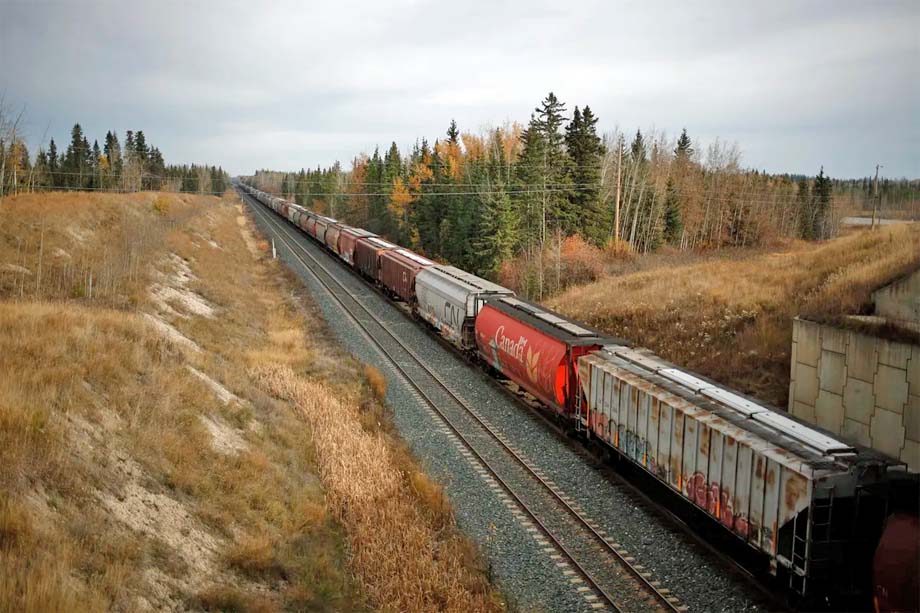
Canada - Canada's big railways hauled record amounts of wheat, canola, and other grain in October,
as farmers rebounded from last year's drought to harvest a healthy crop.
Canadian National Railway Co. (CN) says it moved 3.23 million tonnes of Western Canadian grain, topping its record set
in October, 2020, by more than 50,000 tonnes.
Canadian Pacific Railway Ltd. (CP) carried more than 3.14 million tonnes of grain, surpassing its previous best month
by 100,000 tonnes.
Doug MacDonald, CN's chief marketing officer, said in a news release that the higher volumes are a result of
co-operation throughout the supply chain, including farms, elevators, railways, and terminals.
Both railways have purchased new high-capacity cars that carry 44 percent more grain.
"When the end-to-end supply chain runs well, we can move grain to ports and return rail cars quickly to elevators
to get more grain on the move," Mr. MacDonald said.
In October, 2021, Montreal-based CN moved 2.36 million tonnes, according to figures the federal government has required
railways to report monthly since a 2018 shipping slowdown, which hurt farmers, grain companies, and Canada's reputation
as a reliable trading partner.
For the week ending 22 Oct 2022 CP carried 757,000 tonnes of Canadian grain and grain products, the highest weekly
total in two years and the second-highest weekly tonnage ever for the Calgary-based railway.
Wade Sobkowich, executive director of the Western Grain Elevator Association, which represents Cargill, Richardson
International, and other large shippers, described CN's service as "in the range of normal."
He said the company is providing 90 percent of rail cars ordered from it by grain companies, leaving 10 percent of
requests unfilled.
"They have moved quite a bit of grain. We'll see what happens come winter and as we get into the fall," Mr.
Sobkowich said.
Tim Heney, chief executive officer of the Thunder Bay Port Authority on Lake Superior, said grain shipments this year
are increasing in volume after last year's drought-stricken crop.
"It has certainly picked up. I would say it's returning to normal. It's not booming," Mr. Heney
said.
Western Canadian grain is moved by rail to the Port of Thunder Bay, where it is loaded on lake or ocean-going ships for
the journey through the Great Lakes and St. Lawrence River.
It is then transferred to terminals or sent to overseas markets.
The port handles about 400 vessels a year, the majority of which carry grain.
Global wheat prices soared this year after Russia invaded Ukraine and threatened to cut off market access to the major
crop producer.
Turkey and the United Nations have conducted vessel inspections to allow the crops to move on the Black Sea and
alleviate concerns about a global food crisis.
Russia resumed its participation in the program on Wednesday, freeing up exports from Ukraine and calming
markets.
Mr. Heney said potash, used for fertilizer, has also been in high demand amid disruptions caused by the attack on
Ukraine, traditionally a large fertilizer maker.
CN said last week its profit fell by 13 percent to $1.5 billion in the three months ending on 30 Sep 2022 compared with
the same period last year.
Adjusted for a payment in the year-earlier period and accounting changes, diluted earnings per share rose by 40
percent.
Grain and fertilizers are CN's third-biggest business cargo by revenue, behind containerized goods, petroleum and
chemicals.
For CP, grain is the second-biggest revenue generator after container shipping.
Eric Atkins.
(likely no image with original article)
(usually because it's been seen before)
provisions in Section 29 of the
Canadian Copyright Modernization Act.

